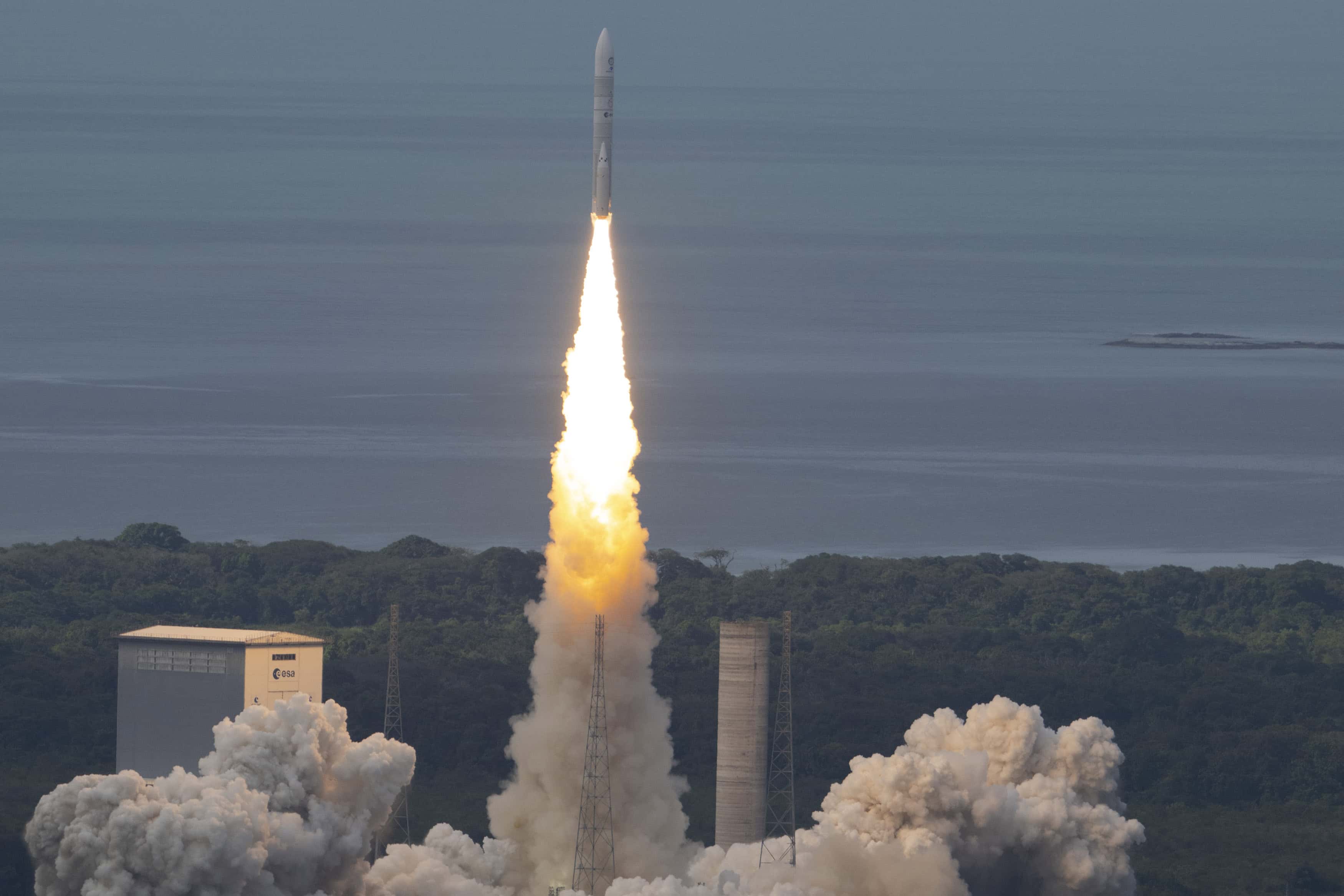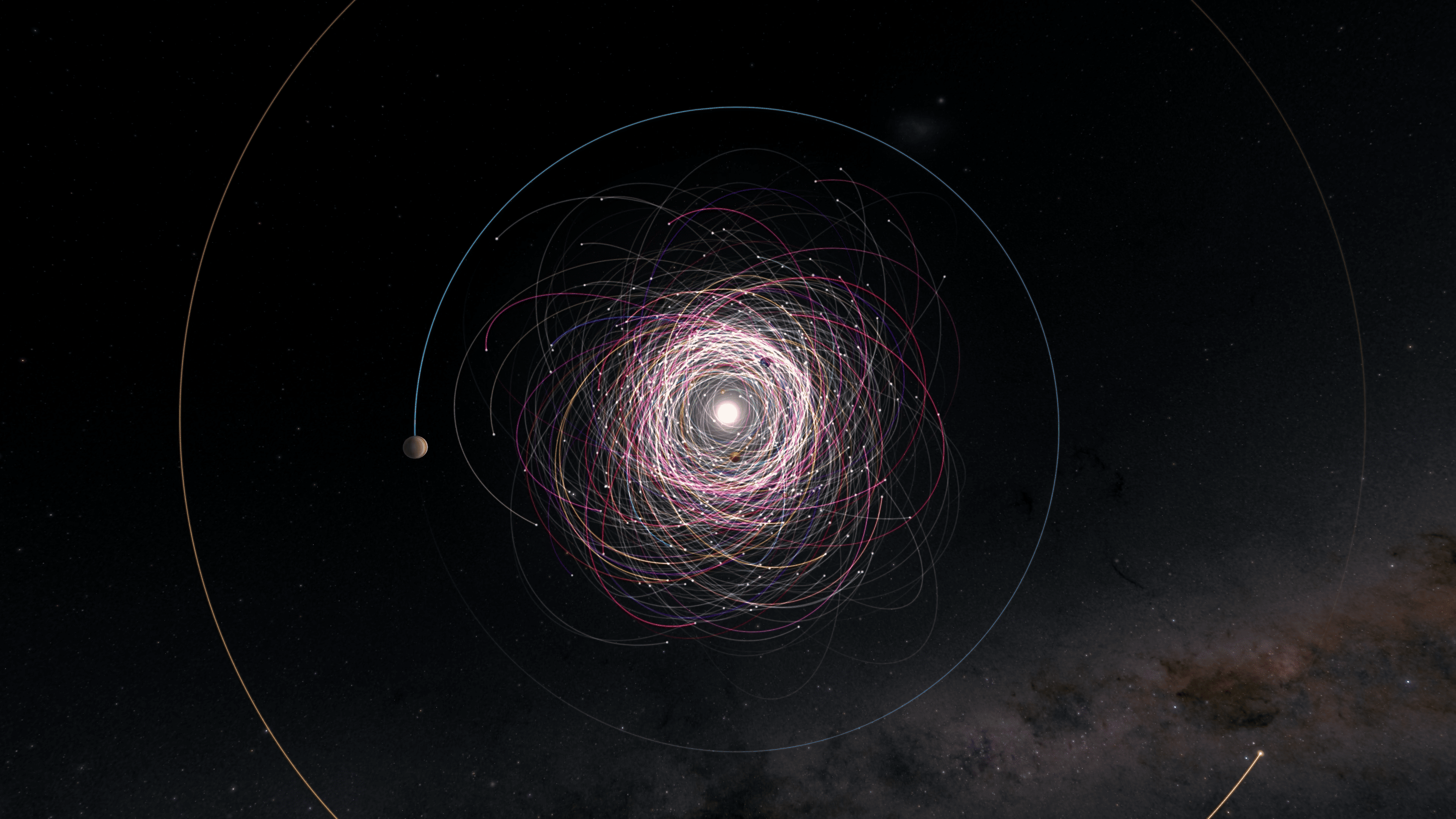
Report by ESA / Science & Exploration / Space Science / Gaia
ESA’s Gaia mission has released a new goldmine of knowledge about our galaxy and beyond. Among other findings, the star surveyor surpasses its planned potential to reveal half a million new and faint stars in a massive cluster, identify over 380 possible cosmic lenses, and pinpoint the positions of more than 150,000 asteroids within the Solar System.
Gaia is mapping our galaxy and beyond in extraordinary multi-dimensional detail, completing the most accurate stellar census ever. The mission is painting a detailed picture of our place in the Universe, enabling us to understand the diverse objects within it better.
The mission’s latest ‘focused product release’ – announced on October 10th – builds further on this, providing many new and improved insights into the space around us. The release brings exciting and unexpected science: findings that go far beyond what Gaia was initially designed to discover and dig deep into our cosmic history.
So – what’s new from Gaia?
Half a million new stars
Gaia’s third data release (DR3) contained data on over 1.8 billion stars, building a pretty complete view of the Milky Way and beyond. However, there remained gaps in our mapping. Gaia had not yet fully explored areas of sky that were especially densely packed with stars, leaving these comparatively unexplored – and overlooking stars shining less brightly than their many neighbors.
Globular clusters are a key example of this. These clusters are some of the oldest objects in the Universe, making them especially valuable to scientists looking at our cosmic past. Unfortunately, their bright cores, chock-full of stars, can overwhelm telescopes attempting to get a clear view. As such, they remain missing jigsaw pieces in our maps of the Universe.
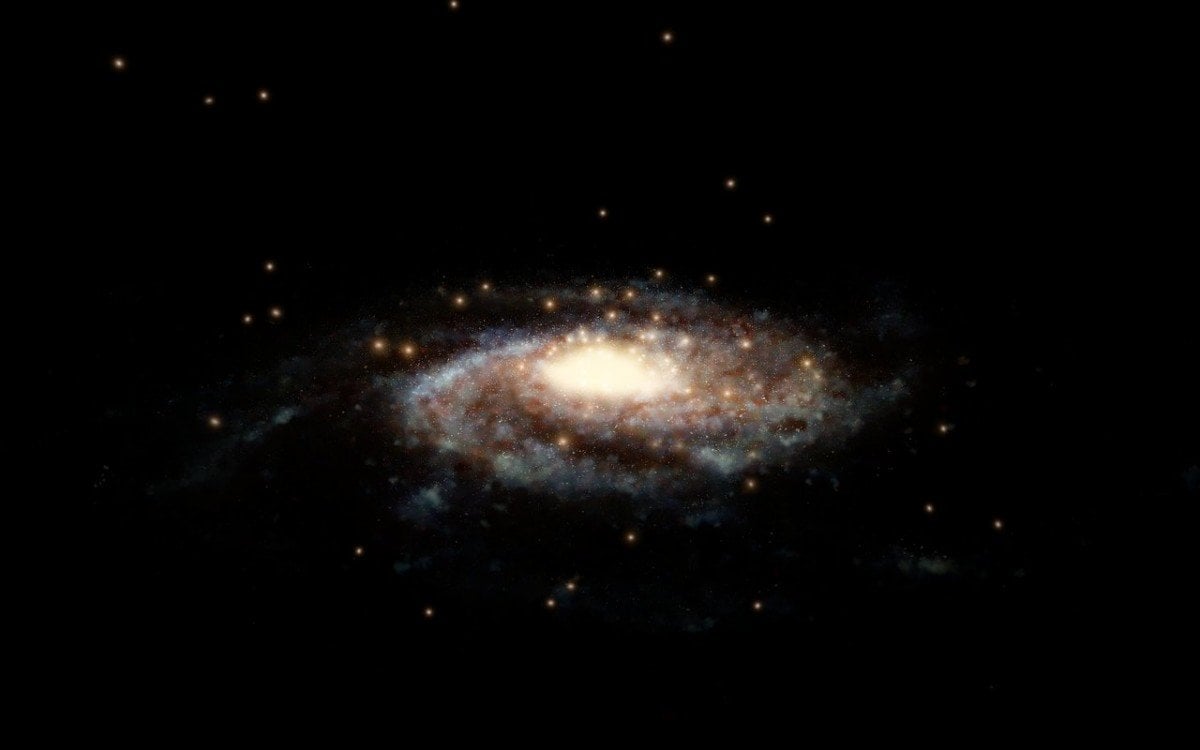
To patch the gaps in our maps, Gaia selected Omega Centauri, the largest globular cluster seen from Earth and a great example of a ‘typical’ cluster. Rather than just focusing on individual stars, as it typically would, Gaia enabled a special mode to map a wider patch of sky surrounding the cluster’s core every time it came into view.
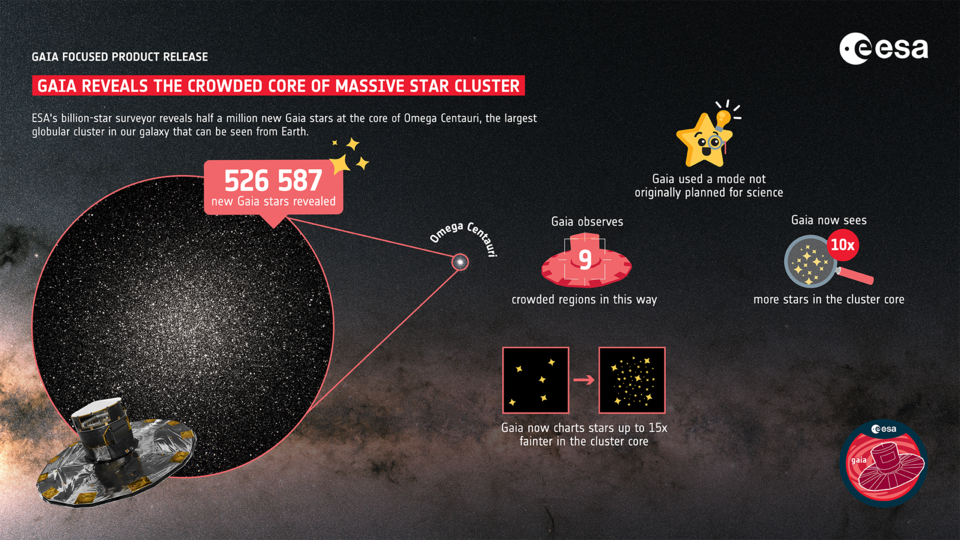
“In Omega Centauri, we discovered over half a million new stars Gaia hadn’t seen before – from just one cluster”, says lead author Katja Weingrill of the Leibniz-Institute for Astrophysics Potsdam (AIP), Germany, and a member of the Gaia collaboration.
“It’s not just patching up holes in our mapping, although this is valuable in itself,” adds co-author and Gaia Collaboration member Alexey Mints, also of the AIP. “Our data allowed us to detect stars too close together to be properly measured in Gaia’s regular pipeline. With the new data, we can study the cluster’s structure, how the constituent stars are distributed, how they’re moving, and more, creating a complete large-scale map of Omega Centauri. It’s using Gaia to its full potential – we’ve deployed this amazing cosmic tool at maximum power.”

This finding not only meets but actually exceeds Gaia’s planned potential. The team used an observing mode to ensure that all of Gaia’s instruments ran smoothly. “We didn’t expect to ever use it for science, which makes this result even more exciting,” adds Katja.
The new stars revealed in Omega Centauri mark one of the most crowded regions explored by Gaia so far.
Gaia is currently exploring eight more regions in this way, with the results to be included in Gaia Data Release 4. These data will help astronomers to truly understand what is happening within these cosmic building blocks, a crucial step for scientists aiming to confirm the age of our galaxy, locate its center, figure out whether it has gone through any past collisions, verify how stars change through their lifetimes, constrain our models of galactic evolution, and ultimately infer the possible age of the Universe itself.
Panning across new Gaia view of Omega Centauri
Looking for lenses: Gaia, the accidental cosmologist
While Gaia was not designed for cosmology, its new findings peer deep into the distant Universe, hunting for elusive and exciting objects that hold clues to some of humanity’s biggest questions about the cosmos: gravitational lenses.
Gravitational lensing occurs when the image of a faraway object becomes warped by a disturbing mass – a star or galaxy, for instance – sitting between us and the object. This intermediate mass acts as a giant magnifying glass, or lens, that can amplify the brightness of light and cast multiple images of the faraway source onto the sky. These curious and rare configurations are visually intriguing and hold immense scientific value, revealing unique clues about the very earliest days and inhabitants of the Universe.
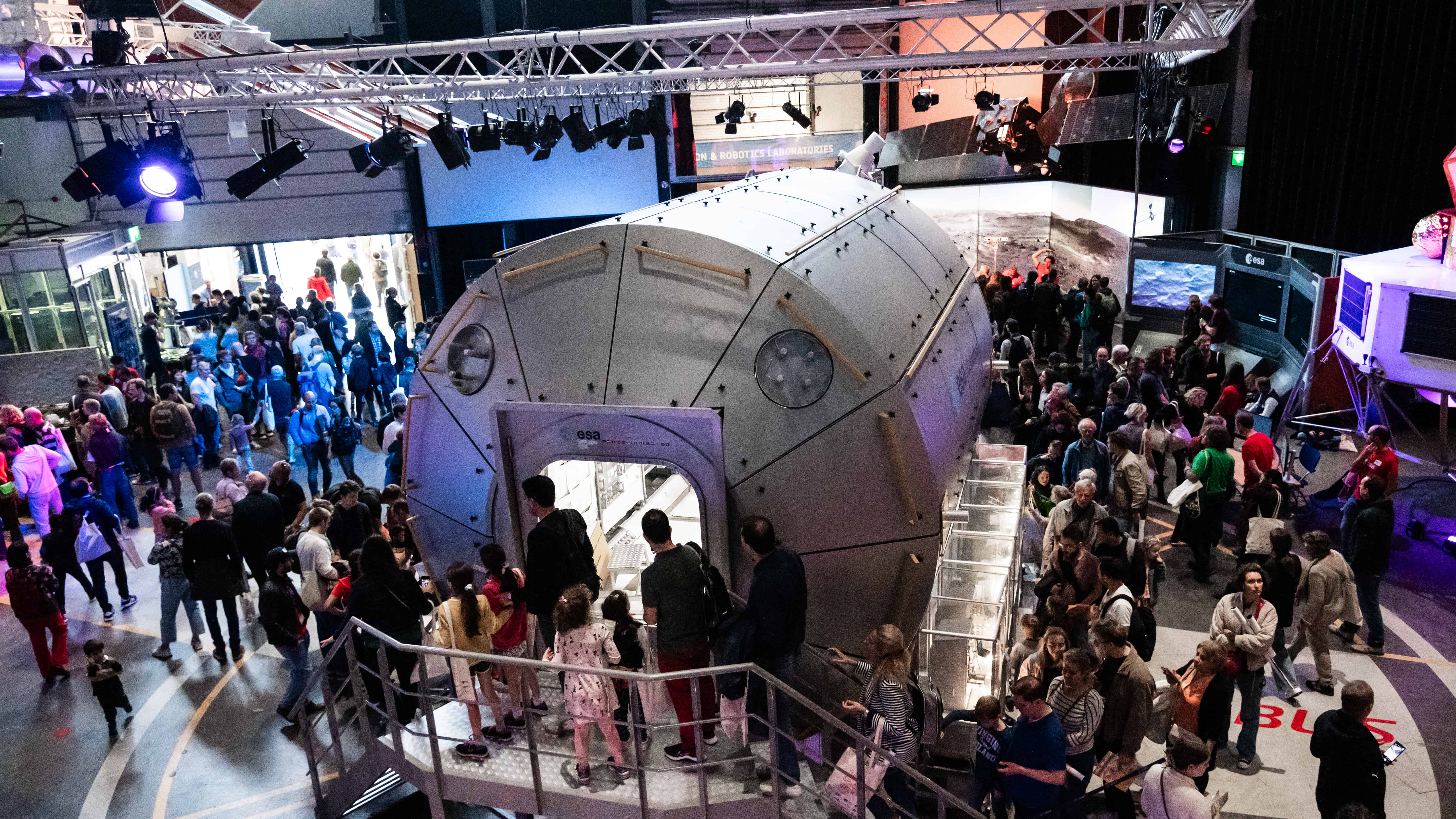
“Gaia is a real lens-seeker,” says co-author Christine Ducourant of Laboratoire d’Astrophysique de Bordeaux, France, and a member of the Gaia collaboration. “Thanks to Gaia, we’ve found that some of the objects we see aren’t simply stars, even though they look like them. They’re actually really distant lensed quasars – extremely bright, energetic galactic cores powered by black holes. We now present 381 strong candidates for lensed quasars, including 50 that we deem highly likely: a goldmine for cosmologists and the largest set of candidates ever released at once.”
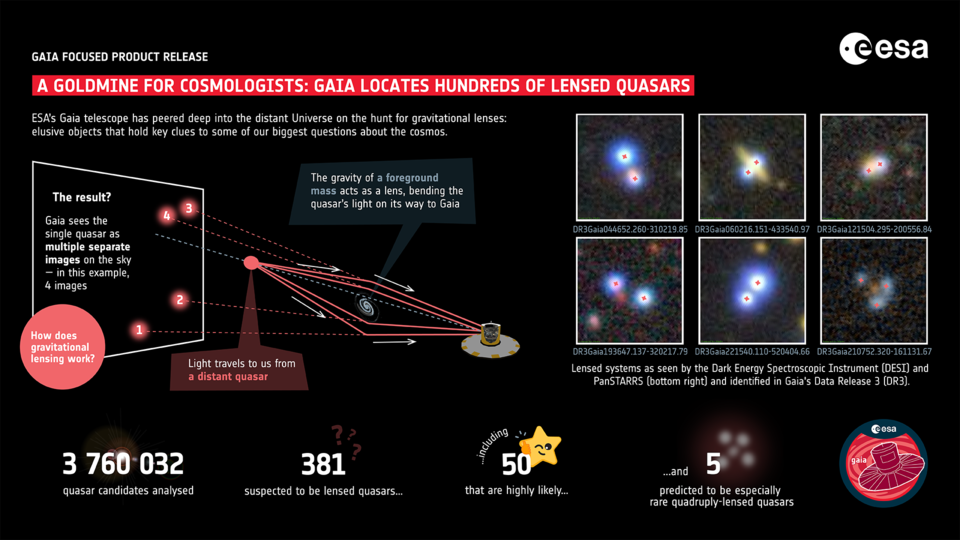
The team identified the candidates from an extensive list of possible quasars (including those from Gaia DR3). Five possible lenses are potential Einstein crosses, rare lensed systems with four different image components shaped like a cross. (See 12 such configurations discovered by Gaia in 2021.)
Finding lensed quasars is challenging. A lensed system’s constituent images can clump together in the sky in misleading ways, and most are very far away, making them faint and tricky to spot.
“The great thing about Gaia is that it looks everywhere, so we can find lenses without needing to know where to look,” adds co-author Laurent Galluccio of Université Côte d’Azur, France, and member of the Gaia collaboration. “With this data release, Gaia is the first mission to achieve an all-sky survey of gravitational lenses at high resolution.”
Extending Gaia’s value into cosmology brings synergy with ESA’s Euclid mission, recently launched on its quest to explore the dark Universe. While both focus on different parts of the cosmos – Euclid on mapping billions of galaxies, Gaia on mapping billions of stars – the lensed quasars discovered by Gaia can be used to guide future exploration with Euclid.
Asteroids, stacked starlight, and pulsating stars
Other papers published on October 10th offer further insight into the space around us, and the diverse and sometimes mysterious objects within it.
One reveals more about 156,823 of the asteroids identified as part of Gaia DR3. The new dataset pinpoints the positions of these rocky bodies over nearly double the previous timespan, making most of their orbits – based on Gaia observations alone – 20 times more precise. In the future, Gaia DR4 will complete the set and include comets, planetary satellites, and double the number of asteroids, improving our knowledge of the small bodies in nearby space.
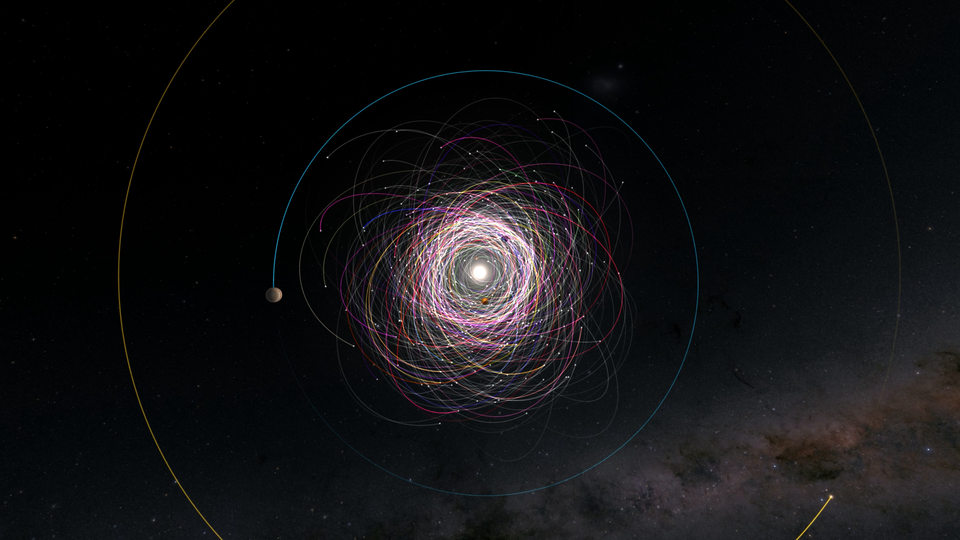
Another paper maps the disc of the Milky Way by tracing weak signals seen in starlight, faint imprints of the gas and dust that floats between the stars. The Gaia team stacked six million spectra to study these signals, forming an incredibly large dataset of weak features that have never before been measured in such a large sample. The dataset will hopefully allow scientists to finally narrow down the source of these signals, which the team suspects to be a complex organic molecule. Knowing more about where this signal comes from helps us to study the complex and intertwined physical and chemical processes active throughout our galaxy and to understand more about the material lying between stars.
Another paper characterizes the dynamics of 10,000 pulsating and binary red giant stars in the largest database available to date. These stars were part of a catalog of two million variable star candidates released in Gaia DR3, and are key when calculating cosmic distances, confirming stellar characteristics, and clarifying how stars evolve throughout the cosmos. The new release provides a better understanding of how these fascinating stars change over time.
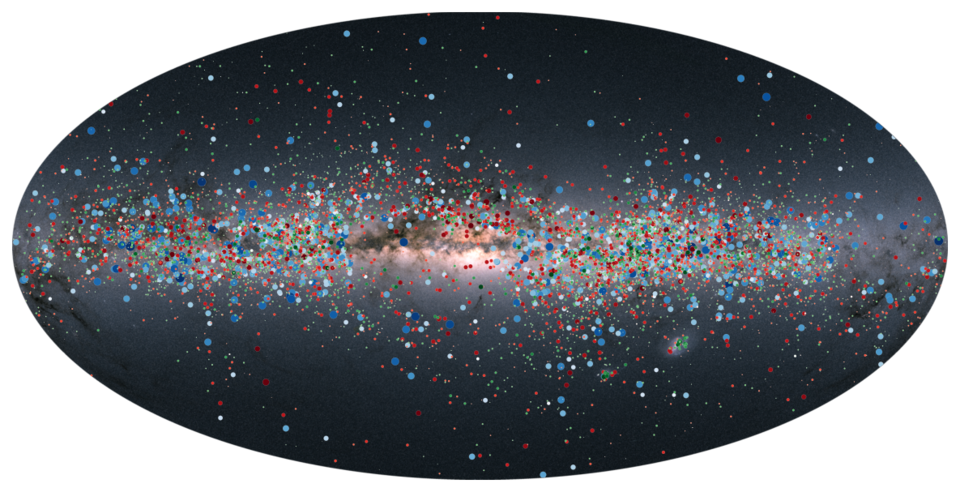
“This data release further demonstrates Gaia’s broad and fundamental value – even on topics it wasn’t initially designed to address,” says Timo Prusti, Project Scientist for Gaia at ESA.
“Although its key focus is as a star surveyor, Gaia is exploring everything from the rocky bodies of the Solar System to multiply imaged quasars lying billions of light-years away, far beyond the edges of the Milky Way. The mission is providing a truly unique insight into the Universe and the objects within it, and we’re really making the most of its broad, all-sky perspective on the skies around us.”







